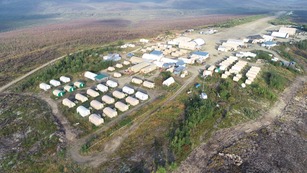.jpg)
Did you know that more than 70% of the cobalt powering our electric vehicles is mined in the Democratic Republic of the Congo, with a significant portion under Chinese control?
According to the World Trade Organization the battery sector is responsible for 70% of the global demand for cobalt. It also requires aluminum, copper, lithium, nickel and rare earths. Further, each battery in an EV requires as much as 440 lbs. of critical minerals
Not only is cobalt critical for EV production, it is also an essential element used to power many forms of renewable energy technologies. Additionally, cobalt is used in a wide range of industries from vehicle airbags to drying agents for paints, varnishes, and inks, to steel-belted radial tires, and more. Cobalt also serves the United States Defense Department in temperature-resistant alloys for jet engines, in magnets — used for things like stealth technology and electronic warfare — and alloys used in munitions.
The heavy reliance on the DRC for cobalt presents significant dangers, not the least of which is political instability that could lead to and generate large gaps and vulnerabilities in the global mineral marketplace. Of broader concern, China controls a large sector of DRC mining operations and processes about 80% of the world’s cobalt.
Supply Chain Vulnerability
Concentrating cobalt production in one region increases supply chain vulnerability. Any disruptions, whether due to political instability, conflicts, or natural disasters, can lead to shortages, market manipulation, and price spikes affecting a broad spectrum of industries reliant on cobalt. Over-reliance on foreign sources, especially any single source for critical minerals poses considerable economic risks.
.jpg)
Alaska: Proven Responsible Resource Management
To address concerns related to foreign mineral dependence, the U.S. could and should pursue strategies to increase domestic production in places such as Alaska where regulatory oversight and environmental laws are some of the most stringent in the world.
With its vast mineral deposits, Alaska could be a major player changing the dynamics of domestic mining production. In particular. Alaska contains large untapped deposits of copper, cobalt, and graphite.
Gold, silver, zinc, lead, and germanium are currently actively mined in Alaska. This includes Hecla Greens Creek Mine, the largest producing silver mine in the U.S., and Red Dog Mine, one of the world’s largest zinc mines and the first mine to achieve the stand-alone Zinc Mark for its sustainable practices.
Increasing the nation’s mineral production could open the door for international collaboration and initiatives to promote responsible mineral sourcing and improved supply chain transparency. Alaska is well positioned to lead the way.
Resources:






